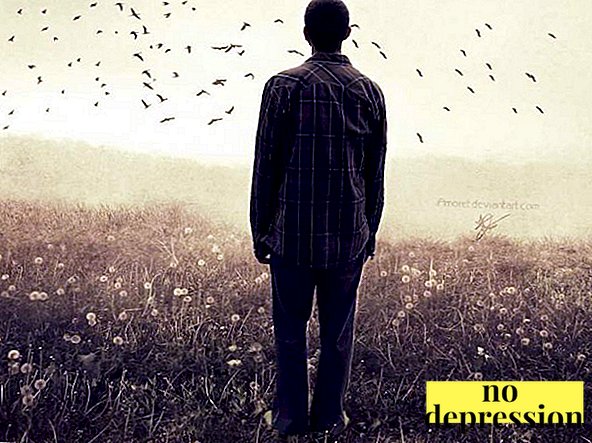Imagination is an important component of human consciousness.
Recreative imagination occupies a special place, playing a big role in cognitive activity.
Concept definition

Recreating imagination - this is the design in the mind of the image of a new object or phenomenon on the basis of the presented verbal description, conditional image.
A person can see a diagram or drawing of the future building and present in his mind, on the basis of the information received, how it will look like in finished form.
It is also sufficient to hear the verbal description of an object from the mouth of the interlocutor, in order to draw in your mind this object.
The ability to recreate with the help of imagination new information, previously unknown, has a positive impact on human activity in various fields.
This skill is of particular importance for the learning process.
Only as a result of the construction in the mind of vivid images of the objects and phenomena being considered can a student learn new information in most areas of study.
Role in activities
Recreating imagination plays a huge role in those human activities that do not imply the possibility of using practical experience.

So, historians describe events, epochs and people from the past, based on the impressions they have in their minds.
These impressions are based on the information received.
Psychologists, sociologists, political scientists, philosophers, geographers, zoologists and many other specialists often cannot directly touch, hear, study those objects that they study.
Without recreating imagination, such activities would be reduced to mechanical learning of known facts, and everything else would remain beyond the limits of knowledge.
It should be borne in mind that, in itself, recreating imagination does not allow for effective activity, unless rely on real information.
That is, the ideas being recreated must correspond to reality, be correct.
The more extensively, accurately and faithfully the individual develops the ability to build literary speculations, the more reliable the beliefs will eventually be formed.
Properties and Value
The main properties of this ability:
- reproductive nature;
- integrity;
- dynamism, flexibility, versatility of the process;
- dependence of reconstruction accuracy on personality characteristics (level of knowledge, talent, life experience, education, age).

Recreating imagination is of great importance because it helps to visualize and predict the surrounding reality.
In activity, this is expressed in the ability to regulate cognitive processes, control events, form an action plan, determine the desired result.
Any anticipation of the expected result (guesswork, intuition, foreboding, insight) is based on the re-creation of existing ideas.
All significant achievements of mankind in the field of science, technology, literature, visual arts occurred as a result of the work of individuals in recreating imaginationbased on existing ideas and knowledge about the surrounding reality.
With this process, a person can regulate not only their activities, but also change the emotional state.
For example, during stressful situations can be aroused in consciousness images of loved ones or images of positive events from the past. It helps to raise the mood, increase confidence in success.
Kinds
There are two main types of recreating imagination:
- Active. This is the formation in the minds of ideas through the purposeful application of volitional efforts. Efforts are being made to achieve the goal. It is the active type of the process that is associated with professional, cognitive, and scientific activities, where the work of consciousness is aimed at obtaining concrete results and achieving goals.
- Passive. Images arise spontaneously, without manifestation of volitional efforts and any desire on the part of the person himself. Such a process often occurs while reading books, communicating with interlocutors, thinking about life situations.
The person does not realize that the information processed by the brain is transformed into specific visual plots.

You can also distinguish three types of process depending on the method of recreating objects:
- The emergence of visual pictures. The most common type of imagination. Most people project information using visual images. A “picture” of the represented phenomenon or object is drawn in the consciousness. Depending on the level of knowledge about the object and the characteristics of a particular person, the pictures can vary considerably. Thus, an erudite and impressionable person builds much brighter images with the help of conjectures than a person with a low level of knowledge and scanty emotional experiences.
- Auditory performance. If the perception is more developed from the auditory side, then the personality uses auditory representations to recreate objects. The timbre of voice, melody, sound, manner of speaking, etc. can be projected in the mind. Representing a natural phenomenon, never seen before, a person imagines its possible sound. Thinking about an unfamiliar individual, he represents the voice, laughter, manner of conversation of a potential interlocutor.
- Motor images. A rare way to build assumptions, typical of actors, dancers and other creative individuals. For them, any image is represented as a movement. If consciousness is occupied by thoughts about a person, then his way of moving, speed of step, gestures and mimicry are represented.
Hearing the music, such people instantly begin to beat the rhythm and represent the performer moving around the stage.

Examples

Recreative imagination works most brightly in the process of cognitive activity.
So, while studying schoolchildren constantly present various images based on the information that is given to them by the teacher.
In geography lesson images of rivers, lakes, mountains and plains appear in the mind.
Natural phenomena in the form of a volcanic eruption, waterfall, earthquake never been observed by most children in real lifebut this does not prevent them from representing them.
Listening to historical events, children represent battlefields, faces of statesmen, buildings of past times, etc.
The more accurately, brightly and interestingly the teacher gives the material, the more reliable the images are formed in the minds of the students.
It helps effectively perceive information and consolidate knowledge. Mechanical learning, which does not find a response in the imagination, does not allow the brain to work fully.

No less significant is the role of the process in question. fiction.
The writer, creating the work, is guided by his own fantasies, ideas.
Further readers who get acquainted with his creation project in their minds personal images. Moreover, the presence of specific descriptions and characteristics of the characters, environment, events never leads to the formation of a single image in readers.
Each person, getting acquainted with a literary work, perceives it through the prism of their own ideas. Exactly because of this reason screen versions of popular books cause much controversy among their fans.
Every reader wants to see on the screen exactly the picture that his fantasy drew while reading. This applies to the appearance of actors, interiors, nature, events, etc.
The director, however, during the creation of the film adaptation, adheres to those images that have caused the work in his own mind.
Recreating imagination manifests itself systematically in everyday life. While waiting for a meeting with a stranger, we unwittingly draw in the mind of his image.
The basis may be information received from common friends, the images in photographs, the voice heard on the telephone, etc. When a real person is not like thatas we imagined it in our mind, we are convinced of the inaccuracy of the intended image.
Imagination and creativity

Recreating imagination allows us present phenomena and objects using the existing verbal description or conditional image.
As a result, a specific image of objects is formed.
Creative fantasy does not rely on the information provided. It is an independent activity on the creation of fundamentally new objects.
At the same time, the existing knowledge about the already existing products of similar activities is used in a minimum amount that does not have a significant impact on the final result. The result is a completely new, original product.
Recreating imagination has a certain scopebecause it relies on some of the benchmarks originally provided. For this reason, the approximate image that will end up can be foreseen.
As a result of creativity, everything can turn out, since initially there are no restrictions.
For this reason, it is often the creativity that makes it possible to expand the ideas existing in society, to push the boundaries, to work out a new world outlook.
Fantasy and creativity are inextricably linked. The composer, who creates his work, relies on the images that appear in his mind. For example, when creating a musical composition, it can represent a natural phenomenon, a loved one, or experienced emotions.

No projection of bright and original images creativity will not bear fruit.
It is for this reason that the most talented musicians, actors and artists are usually people with complex fates, bright and extraordinary personalities.
Their developed imagination, life experience, and emotionality allow them to be as productive as possible. express yourself in the works.
Thus, recreating the imagination is an integral part of our consciousness. It helps a person to get education, learn skills, carry out activities. Without the ability to fantasize impossible creativity.
Recreating imagination - what is it? Find out from the video:



